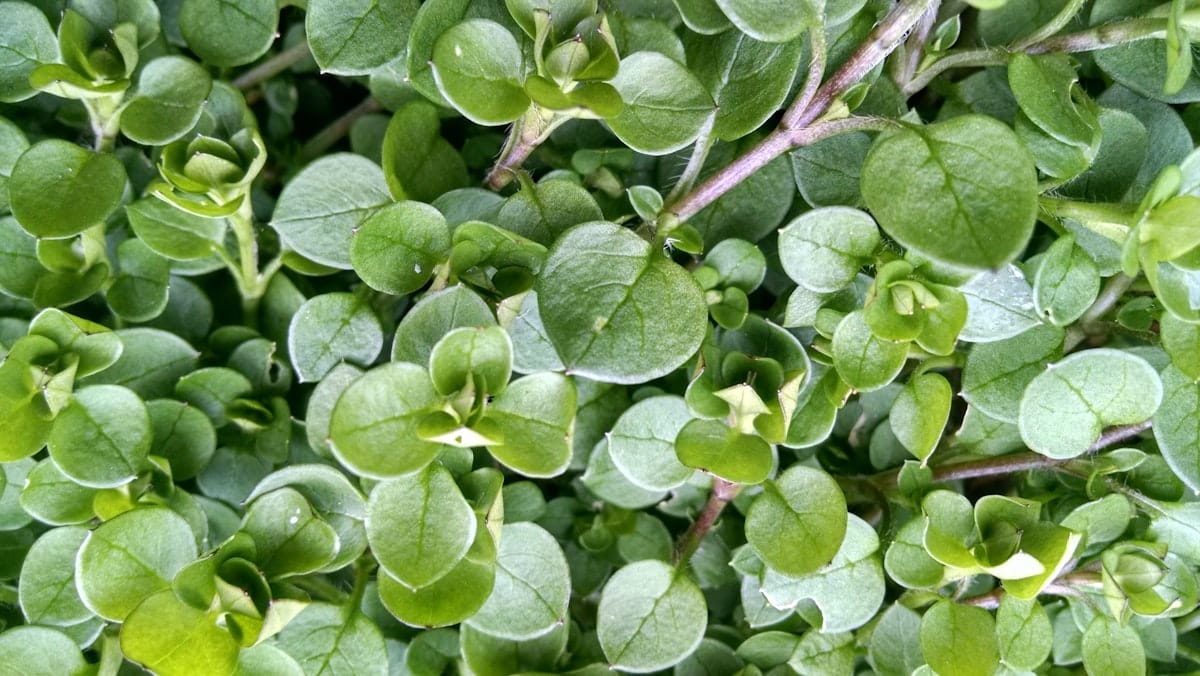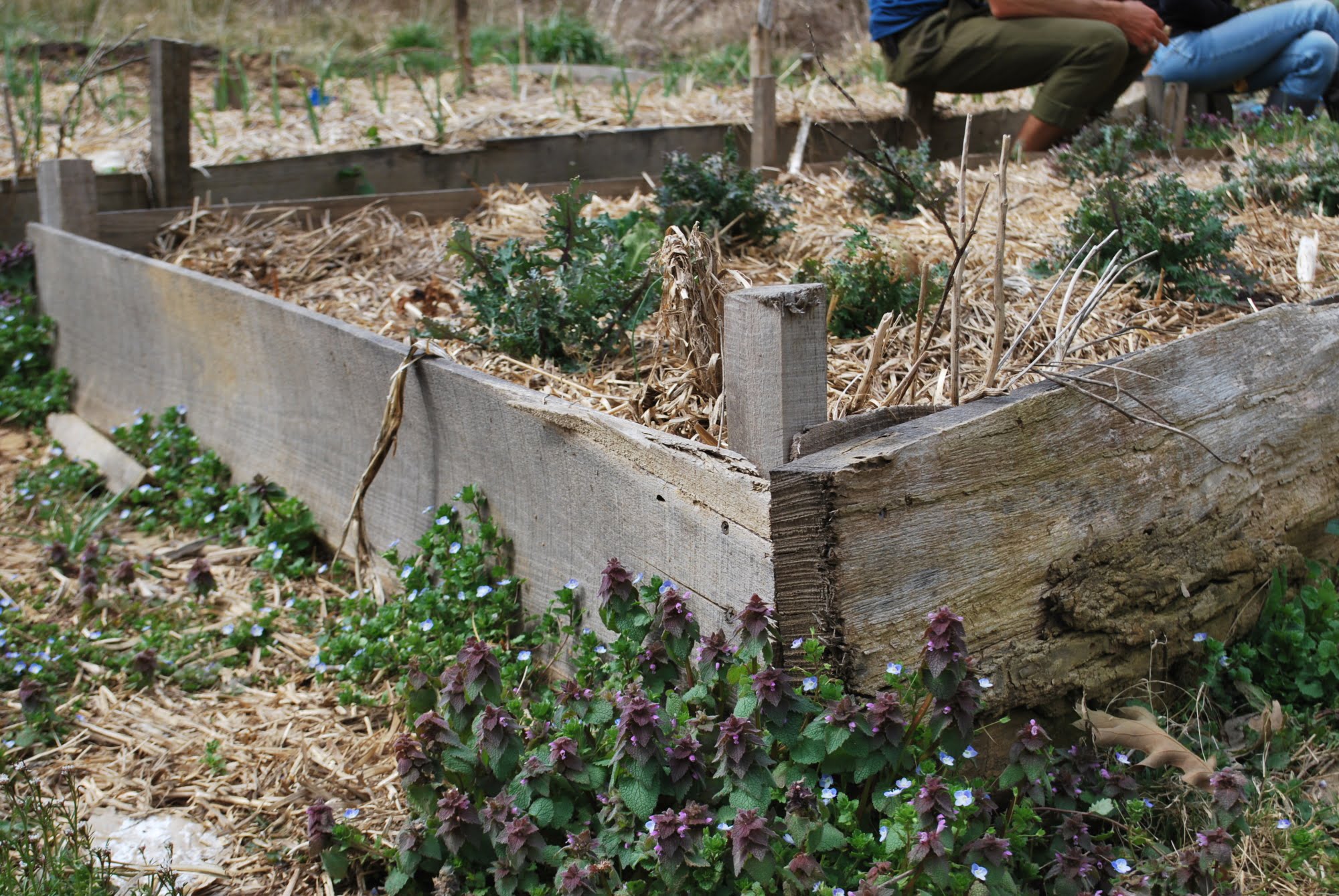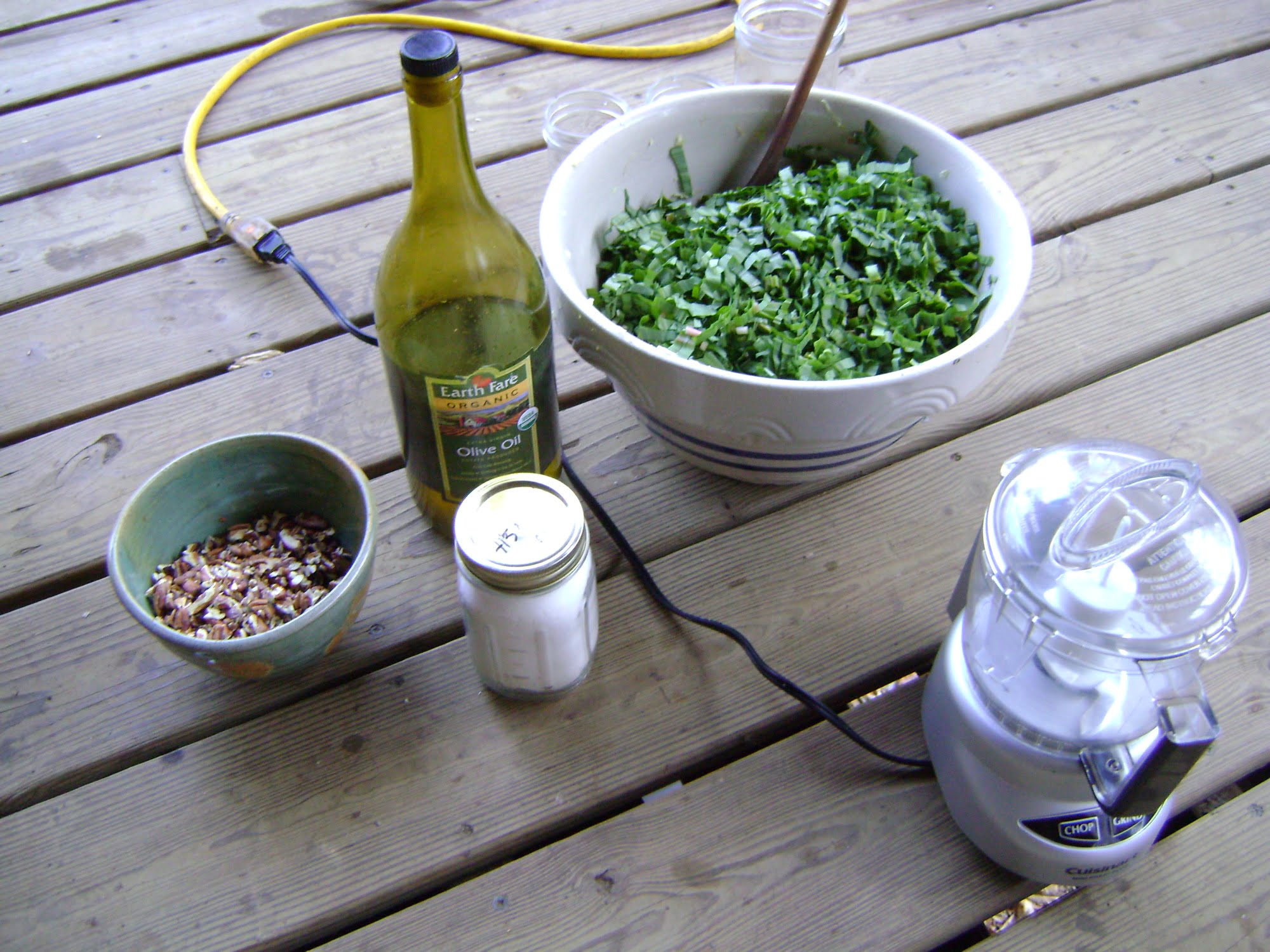

Stellaria media, Stellaria pubera
Family: Caryophyllaceae/Pink family
Harvest time: spring and fall
Uses: food, medicine
What is Chickweed?
Chickweed is a low-growing, cool-season herbaceous plant in the Caryophyllaceae family. It has long been valued for both its nutritional and medicinal uses, especially in herbal traditions across Europe and North America. It spreads easily in garden beds and meadows, often popping up in early spring and again in the fall. Its delicate nature and abundance make it an ideal wild green for foragers and gardeners alike.
Medicinal Uses of Chickweed
Chickweed offers a host of traditional medicinal benefits. It acts as a gentle laxative, demulcent, refrigerant, and anti-inflammatory. A chickweed poultice can be applied topically to help soothe inflammation, abscesses, rashes, and anything itchy. Internally, chickweed is known to calm and lubricate the digestive tract, making it especially helpful during times of digestive discomfort. As a cooling plant, it’s often used to temper excess heat in the body, especially during the spring.To dive deeper into the healing potential of plants like chickweed, consider joining our herbalist class.
Chickweed Nutrition
Chickweed’s pretty packed with nutrients, especially for such a diminutive plant. It contains vitamins A, D, B complex, C, rutin (a bioflavinoid), calcium, potassium, phosphorus, zinc, manganese, sodium, copper, iron and silica. In comparison with spinach, chickweed holds up extremely well. It’s got just as much iron, along with other nutrients. So, when you’re trying to eat you’re daily dose of nutrient-dense leaves, consider this weedy wonder along with the better-known greens. For an all natural spring “cleanse” we love eating chickweed along with pokeweed (properly prepared), nettles, and wild mushrooms.


Learn more about chickweed in our Online Gardening School
Ethnobotanical History and Harvesting of Chickweed
There are many species of this awesome plant. The one that we use the most, common chickweed (Stellaria media) is native to Europe. At this point it’s naturalized in North America and grows virtually everywhere in this continent too. Chickweed has a long history of use as a nutritious edible green by both humans and animals. The ancient Greeks even wrote about using chickweed, and it was also commonly consumed in ancient Ireland.
Star chickweed (S. pubera) is native to our rich cove forests here in southern Appalachia. Although this species is less abundance, it’s perhaps even tastier, and more choice than the common variety. During many of our wild edibles adventures, we’ve feasted upon heaps of salad, primarily composed of star chickweed.


Chickweed Habitat and Cultivation
Natalie willed this wonderful weed into the Wild Abundance garden, now it comes up without fail in early spring and with her winter cover crops. She started eating chickweed regularly when she lived at Wild Roots, and since then it’s been a staple in the garden and kitchen. Chickweed flourishes under row cover with the kale and in the paths, which are protected by raised beds to their sides. Our permaculture apprentices enjoy salads of chickweed during their stay here.
You can transplant chickweed into your garden; just dig up a clump and nestle it in a corner, or wherever you want it. It’s a funny thing to desire a weed in a garden so very much, but chickweed is a very well-behaved and generous one. In fact, it doesn’t seem to compete with cultivated plants, and it yields a tremendous amount of healthy food.
Generally chickweed likes a nice combo of moisture and sun. It will thrive in springtime, die back during the hotter months, then reappear when things cool down. In the wild, European chickweed tends to appear on forest edges. Native “star” chickweed pops up in the forest, as it appreciates more dense shade.
How to Identify Chickweed
Chickweed can be identified by its small, star-like white flowers and soft, vibrant green leaves. The stems are unique—they often have a single line of tiny hairs running along one side, and when pulled apart, they reveal a stretchy inner core. It typically forms mats and thrives in cool, moist areas. Learn more about chickweed and other wild edibles in our Wild Roots blog.
How to Harvest Chickweed
Harvest chickweed using a sharp knife or scissors, cutting just above the soil line to avoid bringing up dirt. This method encourages regrowth and makes cleanup easier. The best time to harvest is in the morning when the plant is perky and full of moisture. Always choose young, tender shoots for the best flavor and nutritional value.
What Are the Benefits of Chickweed?
Chickweed offers numerous health benefits, thanks to its rich supply of vitamins and minerals. It supports digestion, reduces inflammation, and soothes irritated tissues when used both internally and externally. As a cooling herb, it’s especially helpful for relieving heat-related skin conditions and minor infections. Chickweed is also a gentle detoxifier, often included in spring cleanses and herbal tonics. Its versatility makes it useful for culinary, medicinal, and cosmetic applications alike.
Chickweed for Skin and Hair Health
Chickweed has long been used in natural skincare and haircare for its soothing, cooling effects. Applied topically as a salve, compress, or infused oil, it can help calm irritation, itching, eczema, and minor rashes. Chickweed is also sometimes used to support scalp health and reduce dandruff, with infusions added to rinses or oils. Rich in nutrients and gentle enough for sensitive skin, chickweed is a versatile ally for external use.
Chickweed Recipes
Chickweed Salad:
- 6 c leafy (as opposed to stemmy) chickweed, rinsed, and chopped very finely (¼ inch lengths) across the stem
- 1-2 c sweetly ripe autumn olives, redbud flowers, locust flowers, or dried cranberries
- ½ c queso fresco or soft goat cheese
- ¼-3/4 c black walnut pieces, roasted sunflower seeds, or soaked and roasted pecans
Dressing:
- 1/3 c fresh basil or monarda spp (bee balm, etc) leaves
- 1 c olive oil
- 2 T lemon juice
- 1/8 c honey
- 1 ½ t salt


Chickweed Pesto
- 6 c packed fresh chickweed
- 5-20 cloves garlic (depending on size and intensity of the garlic and your personal taste)
- 1 c olive oil
- 1 T sea salt
- 1 c toasted black walnuts, sunflower seeds, english walnuts, or pecans
- zest from 1 lemon (make sure it is organic because you are using the skin)
Instructions: Harvest chickweed with a knife to avoid dirt; rinse and swing to dry.Make pesto in batches; add half of olive oil first to food processor or blender, then add garlic, then salt, and finally the greens. Eat fresh, store at room temp for up to a week, or freeze for up to 4 months.
Freeze in ice-cube trays, and empty into ziploc bags so that you can defrost just the right amount of pesto.
More Ways to Use Chickweed in the Kitchen
Chickweed’s mild flavor and soft texture make it a wonderful addition to many dishes. In addition to salads and pestos, it can be gently sautéed like spinach, stirred into soups, or blended into green sauces. Chickweed is also great in omelets, wraps, and spring rolls. Cooking it briefly helps retain its nutrients while enhancing digestibility.
Frequently Asked Questions About Chickweed
Chickweed has bright green, oval-shaped leaves that grow in pairs along a stretchy stem with a single line of fine hairs. It produces small, white, star-shaped flowers with five deeply notched petals, giving them the appearance of ten. The plant forms dense mats and prefers cool, moist environments like garden paths and forest edges. It’s often one of the first greens to emerge in spring. Chickweed features bright green, tender leaves with small white star-like flowers. It has a single line of fine hairs on its stems and prefers cool, moist environments.
Yes, chickweed is entirely edible and quite tasty. Its tender leaves, stems, and flowers can be eaten raw in salads or cooked in soups and sautés. It’s a favorite among wild food enthusiasts for its pleasant flavor and versatility. Chickweed also blends well into pestos and smoothies for an added nutritional boost. Yes, chickweed is completely edible and delicious raw or cooked. It’s often used in salads, pestos, and soups.
Chickweed is known for its anti-inflammatory, demulcent, refrigerant, and mildly laxative properties. It helps soothe mucous membranes, making it useful for irritated digestive or respiratory tracts. When applied topically, chickweed can calm itchiness, redness, and swelling caused by eczema, rashes, or insect bites. It’s often used in salves, poultices, and teas as a gentle herbal remedy. Chickweed is anti-inflammatory, demulcent, cooling, and gently laxative. It’s used for digestive support, skin irritations, and mild pain relief.
Chickweed tea is soothing and supportive for the digestive and urinary systems. It can help ease bloating, calm inflammation, and gently stimulate the body’s natural detox processes. The tea also delivers important nutrients and is sometimes used in herbal weight loss or cleansing regimens. Sipped warm or cold, it’s a refreshing herbal infusion with wide-reaching benefits. Chickweed tea may help reduce inflammation, support detoxification, and soothe the digestive tract.
Chickweed has traditionally been used in herbal formulas to support healthy metabolism and reduce water retention. It contains compounds that act as gentle diuretics and may help suppress appetite slightly. Drinking chickweed tea or adding the greens to meals may aid in cleansing and weight-balancing efforts when paired with a healthy lifestyle. Always consult with a healthcare professional before using herbs for weight management. Chickweed is sometimes included in weight loss teas or tinctures due to its mild laxative and metabolism-supporting qualities.
Yes, chickweed offers several benefits that may be particularly supportive for women. Its cooling and anti-inflammatory properties can soothe menstrual discomfort, while its mineral content helps support healthy skin, hair, and hormonal balance. Chickweed may also be useful in postpartum care as a nourishing and gentle healing herb. As always, it’s best to consult with a trusted herbalist or midwife when incorporating herbs into women’s health routines. Yes, chickweed may help with hormonal balance, skin clarity, and menstrual support due to its mineral content and cooling properties.
Chickweed has a mild, pleasant flavor that’s slightly sweet and grassy, somewhat similar to corn silk or baby spinach. It lacks the bitterness of many other wild greens, making it approachable for most palates. Its tender texture and subtle taste make it a great base for spring salads, pestos, and green smoothies. It’s especially tasty when harvested young. Chickweed has a mild, slightly sweet and grassy taste that’s very palatable raw or cooked.
Yes, chickens absolutely love chickweed—it’s even believed to help promote egg-laying. Rabbits also enjoy eating chickweed and benefit from its nutrients and fiber. While deer may nibble on chickweed if other food is scarce, it’s not a preferred staple in their diet. This makes chickweed a relatively safe wild edible to grow near gardens frequented by wildlife. What about rabbits and deer? Yes, chickens love chickweed! Rabbits can safely enjoy it, too. Deer may nibble on it, but they don’t typically rely on it as a major food source.
Chickweed thrives in cool, moist conditions, so it usually dies back during the hot, dry months of summer. However, it often reseeds itself and reemerges in the fall when temperatures drop again. In garden settings with shade and consistent watering, chickweed may persist a bit longer. Its lifecycle makes it one of the earliest and latest greens available in many climates. Yes, common chickweed usually fades in hot weather but returns in the cooler seasons of spring and fall.
Harvest chickweed using a sharp knife or scissors, cutting just above the soil line to avoid bringing up dirt. This method encourages regrowth and makes cleanup easier. The best time to harvest is in the morning when the plant is perky and full of moisture. Always choose young, tender shoots for the best flavor and nutritional value. Use a knife or scissors to snip chickweed just above the soil line. This prevents bringing dirt into your harvest and encourages regrowth.
Chickweed is incredibly adaptable and grows in a wide variety of environments. It prefers cool, moist conditions and is commonly found in garden beds, shaded lawns, forest edges, and disturbed soils. It grows prolifically in temperate regions of North America, Europe, and beyond. Because it spreads easily, it’s often considered both a wild edible and a welcome garden companion. Chickweed grows in gardens, forest edges, lawns, and shaded moist areas across much of North America.
Chickweed typically grows close to the ground in sprawling mats, reaching heights of 2 to 12 inches depending on conditions. In shaded or protected areas, it can become slightly more upright. While it’s not a tall plant, its dense, low-growing habit makes it effective at covering bare soil and acting as a natural groundcover. Chickweed typically grows close to the ground in mats but can reach up to 12 inches in height in ideal conditions.
Chickweed can be used much like spinach or other tender greens. It’s delicious lightly sautéed with garlic and olive oil, added to omelets or stir-fries, or stirred into soups near the end of cooking. Chickweed also makes a vibrant pesto and blends well into sauces and spreads. Cooking enhances its mild flavor and soft texture, especially for mature stems. Chickweed can be sautéed like spinach, blended into pesto, added to soups, or tossed raw into salads.
To dry chickweed, harvest young, clean plants and lay them out in a single layer in a well-ventilated, shaded space. Avoid direct sunlight, which can degrade the plant’s nutrients and color. Once the chickweed is fully dry and crispy, store it in an airtight container away from heat and light. Dried chickweed can be used for teas, infusions, and homemade herbal preparations. Harvest young, tender chickweed and dry in a well-ventilated, shady space. Once fully dry, store in an airtight container for future use.
How to Use Chickweed in Everyday Herbalism
Chickweed can easily become part of a seasonal wellness routine. Sip chickweed tea to soothe digestion and support gentle detoxification. Use fresh chickweed in salads or smoothies for a mineral-rich boost, or apply it topically to cool and calm the skin. For those interested in weight balance or metabolism support, chickweed may also be used in tincture or tea blends alongside other supportive herbs.
Discover More Chickweed Benefits
Chickweed is more than just a common weed—it’s a powerful plant ally packed with nutrients and healing potential. From garden to kitchen to apothecary, this vibrant herb offers a wealth of uses for those who know how to identify and harvest it.
Want to deepen your herbal knowledge and learn how to use plants like chickweed for food and medicine? Join our hands-on herbalist class and connect with the wild world around you.

